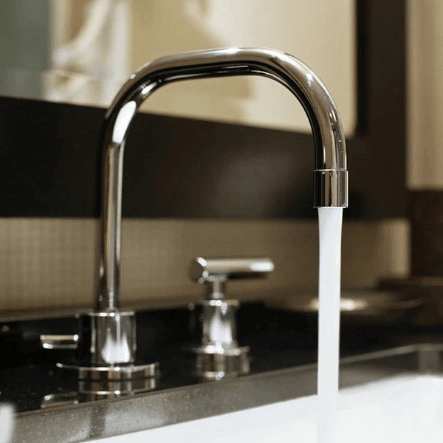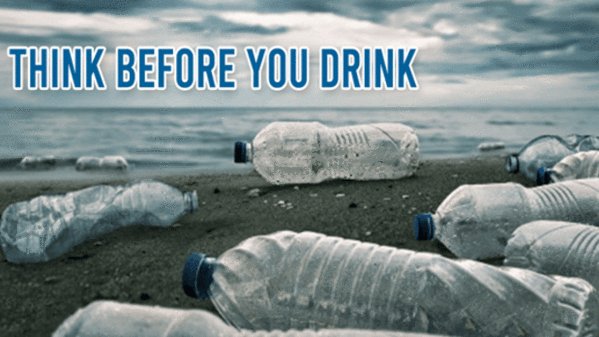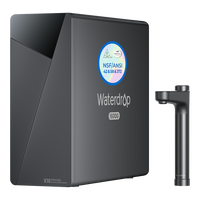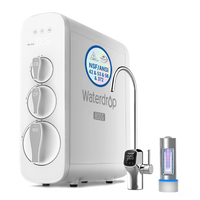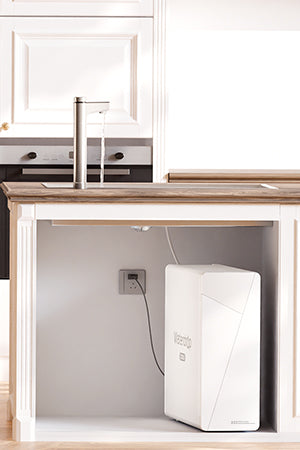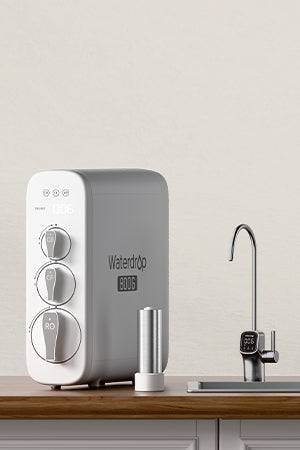Almost every American household countertop has a water filter pitcher installed for the right reasons. It is easy to install and use, where you can witness the water being clearly filtered. It also requires minimum space and maintenance.
What are the Health Risks of Drinking Unfiltered Water?
The increasing demand for clean, drinkable water over the past few years can only mean one thing – people are beginning to see the risks involved in drinking water from doubtful sources. There are several reasons to avoid unclean water, but there are even more to avoid drinking them. Among other things, your health is at severe risk when you feed your body with
contaminated water.
You might want to ask if drinking tap water comes with health risks? The answer is yes. Yes, most tap water in the country is treated in line with the standard sanitation regulations and is not the same as the raw, untreated water you get from other sources. The treated tap water is considered fit for drinking. However, despite the rigorous treatment, tap water is never subjected to filtration. This means you may still find radiological, chemical, biological, and even physical contaminants in them.
Contaminants in tap water are either natural or humanmade. You can find the comprehensive list of these contaminants on the EPA website. But the notable ones include heavy metals, industrial chemicals, pesticides, and lead. The extent of the havoc these contaminants cause depends on their levels, although a few of them are harmless at every level. Lead is one of the most dangerous chemical contaminants you can remove from your water using water filters for drinking water.
For instance, you may be at the risk of
lead poisoning if you use lead faucets or pipes in your home plumbing system. Lead poisoning comes with severe symptoms, like delayed development and learning disabilities in children or kidney problems in adults. Bacteria, parasites, and viruses may also be present as biological contaminants. If unfiltered, they cause severe gastrointestinal issues in the body. Common symptoms include nausea, cramps, and diarrhea.
The situation becomes even more tricky when you discover it is almost impossible to ascertain your tap water purity before drinking. The only right way to do this is to test your water – a rather long and tedious process. The better approach is to filter your tap water using the high quality water purifier.
Common Reasons for Choosing the Right Water Purifiers
Have you ever wondered why more American households are going for filters? It is because it gets the job of providing clean drinking water done in a simple, yet effective way. Here are some of the common reasons people choose filters:
Taste Improvement
Suppose you are not satisfied with how your tap water taste; it may just be a very good reason to get a water pitcher filter. Strange water taste can be due to a couple of factors, for instance, the presence of disinfectants like chlorine in the water, or contaminants like sulphur and others. While these contaminants hardly pose health problems, they affect the taste of tap water considerably.
In other cases, it may be due to the presence of harmful contaminants like Volatile Organic Compounds (VOC) in your private wells. These usually result in severe health issues, especially in the kidneys, livers, and nervous systems. They may also cause skin irritation, cancer, and a breakdown of the mucous membranes.
Water pitcher filters are designed to filter off these unusual tastes with its inbuilt activated carbon filter. There are also
reverse osmosis systems capable of reducing the levels of common chemicals. It is important to note that only NSF 42 rated filters can remove unpleasant taste and odor from tap water.
Hard Water
Calcium, Magnesium, and similar minerals are abundantly present in hard water. Their presence comes with a couple of scaly residue issues in pipes and containers and poorly lathering soaps. The solution here is to soften the water using water softeners. However, the downside is that only the minerals are removed, the germs in the water are retained. A water pitcher, on the other hand, removes both.
Weakened Immune System
Immunocompromised Americans prefer to install a water treatment system to ensure that their drinking water is free from germs and contaminants. The weakened immune system in these people is more susceptible to problems if fed with contaminated water, especially water containing the germ - Cryptosporidium. Any water filter pitcher rated NSF 32, or NSF 58, effectively filters out this germ and other contaminants.
Water Aesthetics
We now have more innovations around the water purification industry. There are filter jugs designed around a carbon filter and similar filtration materials like an ion-exchange resin. These items serve dual purposes – filtering tap water and adding to the aesthetics value of your home. In the end, you have cleaner drinking water.
Convenience
The design of the right water filters for drinking water makes them convenient to install, use, and maintain. You can be done with the installation in a few minutes. They are also mobile and work separately from the plumbing. So, even if you have reasons to switch apartments, you can take your glass water filter pitcher to your new place. Whole filtration systems do not offer these benefits.
Removal of Harmful Contaminants
Even treated tap water contains some contaminants, which are almost impossible to see or detect out of the faucet. When installing the right pitcher water filter with ion-exchange resins or activated carbon filters, you can remove these contaminants. Continuous consumption of copper, chromium, lead, and other heavy metals has serious adverse effects on our health. If your feed water is more contaminated than usual, consider getting a whole filtration system instead of a pitcher.
Eco-friendliness
Pitcher water filters are designed to provide you with clean and drinkable water out of the faucet. This removes the need for
bottled water, and by extension, the accumulation of plastic bottles. You can save money on thousands of water bottles with just one filter pitcher.
Affordability
You will most likely not spend more than a hundred dollars on the high-rated water purifier. The installation is a DIY with zero additional costs. This means you are spending less compared to what countertop or under-sink filters will cost you. Yes, you will cough out more money that can be spent on bottled water upfront, but it becomes a highly profitable investment in the long run.
Now that you know what pitcher of water brings to the table and why you need to get them, let's move on by looking at how they work.
How do water pitcher filters work?
All pitchers do not work the same way because they usually contain different types of media. The media, in turn, determines how a water pitcher filter will operate. Brands tend to prefer specific types of media and use the same in their filters. For instance, filters with activated carbon as their media will work by the principle of adsorption, i.e., drawing the contaminant molecules with great force and keeping them stuck to the carbon.
Carbon, with its large surface area, can be likened to a sponge in this case. It ensures that these contaminants are removed from the tap water passing through it. So, you can expect your water pitcher filter with an activated carbon filter media to remove mercury, copper, lead, and other metals; pesticides, chlorine, and other chemicals; and organic compounds that contribute to the unpleasant taste and odor of your water.
One brand that prefers using activated carbon filter is Brita. The coconut-based carbon filter in the Brita water filter effectively filters mercury, cadmium, copper, zinc, and chlorine. However, like other activated carbon filters, it is ineffective against bacteria, viruses, nitrates, and dissolved minerals. This is because these contaminants do not bind to the carbon. But that is not really a problem – the standard treatment process tap water undergoes removes the bacteria and viruses, while the dissolved minerals are not necessarily harmful. Some filters use an ion exchange resin as their media. This media is particularly known for making hard water soft by removing magnesium and calcium ions.
Whichever water pitcher filter brand you are going with, ensure that their products are
NSF-certified, indicating they have been subjected to vital sanitation standards, such as NSF/ANSI 53. Alternatives to the pitcher of water include distillation and reverse osmosis units. However, these are more complex and expensive than the pitcher filters.
All Water Filter Pitchers Are Not The Same
It is common to see people lump all glass water filter pitchers as the same. This is incorrect; water filter pitchers are not built the same way or for the same purpose. Each high-rated home water filter pitcher is designed to remove certain types of contaminants. This is why you must first know the contaminants present in your water before shopping for a water filter pitcher. With this knowledge, you can check any pitcher packaging to see if it is built to remove these contaminants from your water.
Also, it is important to note that there is no universal filter. You will never find a filter that can remove all the contaminants known to man. While some are inclined towards improving taste and odor, others are suited for removing chemicals and heavy metals. This is why you will see a pitcher that removes contaminants while leaving your water with a bad taste.
To make things easier for the shopper, each filter is assigned a certification mark to denote what they remove. A pitcher that removes lead and similar volatile organic compounds like pharmaceuticals, heavy metals, and
hormones will have individual certification marks for each of these contaminants on the packaging.
Do not expect a water filter pitcher to remove a wide range of contaminants. If you suspect your water contains many harmful contaminants, go for another water filtration system instead – a RO system or a distillation unit.
How to find the right water purifier pitcher?
Now that you are in the market for the right water purifier pitcher for your household, you should familiarize yourself with the necessary information required to make a good choice. Otherwise, you may have a hard time sieving through the multitudes of options available in the market. We have highlighted the most important things to look out for in your search:
1. Target Contaminants
The first thing you should check before settling for a particular water pitcher filter is whether they are suited for the contaminants present in your tap water. This information can be derived from the NSF/ANSI standards certification. Furthermore, you should also check if the manufacturing brand is registered with the
Water Quality Association (WQA) as a member.
The primary role of most pitcher filters is to make the tap water aesthetically better. That said, it is recommended that you settle for a pitcher with an NSF/ANSI 42 certification. You will find only a few options with this certification, so be ready to expand your search if necessary.
A filter with an NSF/ANSI 53 certification should be your target if you want to remove harmful pollutants like heavy metals from your tap water. Although this type of filter is very scarce, you may be lucky to find one. If not, you may have to settle for a proper water filtration system for your tap water treatment.
To make things simpler, we have listed the common certifications of a very good water filter pitcher below:
-The New NSF Standard 401 – A filter with this certification has been verified to be very effective at removing chemical compounds like pesticides, herbicides, and trace medications, including over-the-counter and prescription drugs. Note that it is relatively newer than other certifications on the list, so the new filter pitchers may not have been tested for this capability.
-NSF Standard 43 – A filter with this certification is capable and effective against contaminants that put you at ill-health risks. These contaminants include Volatile Organic Compounds, fluoride, nitrites, nitrates, and other inorganic compounds. Heavy metals like Lead and Arsenic are also on the list.
-NSF Standard 42 – A filter with this certification is verified to effectively remove the taste and smell of chlorine from your tap water.
Note that these certifications are essentially necessary to confirm the manufacturers' claims that a filter is very effective against a certain contaminant.
2. Filter Life
Again, the filter life differs across all water filter pitchers. In this case, the determining factor is the quality and quantity of the feed water you subject the filter to. That said, the manufacturers assume that you will subject the filter to tap water of normal quality when estimating the filter life.
The ideal filter life of a water pitcher filter is between two and six months. Although some manufacturers may suggest that the filter will last longer, chances are they become non-effective after this period. It is better if you can get a filter with an inbuilt filter replacement indicator.
3. Jug Material
Most manufacturers have adopted a plastic build for their water pitcher filter. However, these plastics are of different grades. If you end up with a pitcher built from a low-quality plastic, it puts you at the risk of chemicals leaching into the clearly filtered water filter pitcher. Instead, choose pitchers made from food-grade plastics and bisphenol-A-free (BPA-free) materials.
4. Jug Size
How many people are you providing filtered water for? This number will determine the quantity of water you want to treat at a time. If your family is large, a larger capacity pitcher, for instance, a ten-cup model, is ideal. This will ensure that you get more water at a go instead of the time-consuming batch treatment.
If you want to avoid refilling the pitcher altogether, opt for under-sink high-rated water filters.
5. Ease of Use and Cleaning
A water filter pitcher that is not durable will be difficult to use, clean, and maintain. So, when shopping, ensure that you choose a sturdy model where all parts fit tightly together. This will ensure no leakage. If possible, opt for the water filter pitcher with an auto-lid over the one with a manual lid.
For better results, clean your pitcher weekly to ensure zero algal or bacterial growth. If this is allowed, the algae and bacteria become new contaminants over time. Get a pitcher with a simplistic design and little or no complications. This will make cleaning easier and faster.
6. Filter Speed
A clearly filtered water filter pitcher may offer impressive purifying capabilities but deliver the filtered water at a slow rate. This can be a frustrating experience. So, check out the filter speed of your water pitcher filter before settling for it. It is a shortcoming that is mostly attributed to pitchers with a single filter. So, you may want to consider units with two filters.
What does the filter remove?
Let's talk about the harmful contaminants your filter pitchers remove from tap water and how they got there in the first place.
1. Chlorine
Chlorine finds its way into tap water during the disinfection phase of the treatment by municipal water agencies. Yes, chlorine helps to disinfect water, it is also known to cause a couple of health issues and diseases. Lastly, chlorine in tap water tends to add a chemical-like taste many do not find suitable.
2. Lead
Lead is another harmful contaminant that may be present in your tap water. According to EPA, it is even more common than we all predict. Lead finds its way into drinking water due to the corrosion of plumbing materials made from Lead. The corrosion results from the continuous flow of overly acidic water or water with low mineral content through these fixtures and pipes.
3. Trihalomethane compounds
This is one of the ripple effects of the presence of chlorine in tap water. The interaction of chlorine and organic matter in water forms these trihalomethane compounds. These TCs are known causes of different illnesses, such as some types of cancer.
4. VOCs
VOCs means Volatile Organic Compounds – organic compounds found in herbicides and pesticides we apply on crops and plants. They are applied to improve the soil, but they sometimes leach out of the soil and into your drinking water supply.
5. Giardia
Giardia duodenalis, a parasite that causes Giardiasis or beaver fever, is sometimes present in tap water, considering it is a wet environment. The disease comes with symptoms like diarrhea, abdominal pain, and weight loss in some cases, and all these can last for up to six weeks.
6. Cryptosporidium
Like Giardia, Cryptosporidium is another disease-causing parasite that is commonly found in tap water. It attacks the body by compromising the immune system. These immunocompromised individuals are sometimes at the risk of death.
Fortunately, your glass water filter pitcher can remove all types of contaminants mentioned above. However, as mentioned earlier, it is important to know the type of contaminants your filter pitcher removes specifically.
A good way to start is to check if the pitcher is NSF-certified. Once you are certain, proceed to the NSF's database to see the specific contaminants the pitcher can remove or reduce. Alternatively, this information may be added to the labels on the right water filters. This is why you should take a close look at the labels and personally verify the manufacturer's claims rather than believe sales representatives.
Furthermore, note that a brand may manufacture a wide range of filters designed to be effective against different contaminants. If you find it difficult to classify them, tell the sales representative about your contaminants of interest, and they will help you to select the right model. After they have chosen for you, proceed to verify their claims on the fine print to ensure you are making the right choice.
Lastly, a filter that is effective against a certain contaminant may not be effective against others. They are very specific in their capabilities. For instance, a filter that is effective against germs may struggle against chemicals, and vice-versa. Similarly, a water purifier may be effective against both germs and chemicals, especially those that run on the principle of distillation, ion exchange, or reverse osmosis.
How much does the system cost?
One of the most attractive features of a water filter pitcher is the pricing. But before anything else, set your budget and identify what you want in a pitcher.
The pricing of high-rated water filtration pitcher systems differs, usually based on their capabilities. However, unlike other filtration systems, the water pitcher filters are relatively cheaper. There are filtration systems in the market that will cost you hundreds of dollars, alongside additional costs for installation and maintenance, and filter replacements and fixes when the need arises.
Water filter pitchers, on the other hand, start from around $20. The one-off payment is only for the unit – the installation and maintenance are all DIY that comes at no extra costs.
Replacement filters are also cheaper and readily available. But the best part is that you do not have to switch to a new filter until after six months, plus the replacement process is a DIY. That said, you may have to spend slightly more to enjoy better protection or an effective option against a wide range of contaminants.
There is a wide range of affordable top water filter pitchers to choose from in the market, including the
Waterdrop water filter pitcher models. Waterdrop is a well-known name in the water treatment business, with several nice water filtration systems to its credit. Its range of water filter pitchers is readily available in stores as well as on Amazon. You get up to 200 gallons of clearly filtered water filter throughout the lifetime of a Waterdrop pitcher filter. You can also choose from different models, each with specific NSF certifications.
How often do you need to replace the water filter in your pitcher?
Most people tend to leave their pitcher filters unchanged for a long time because it continues providing supposedly filtered and clean water. But the truth is that the filtered water is hardly clean or pure in such instances because the filter's efficiency has dropped significantly.
Changing the water filter in your pitcher regularly ensures optimal performance. You do not have to wait until you taste a difference in the filtered water before making a change – it is usually too late by then. If you also cannot remember when last you changed your filter, it probably means it has been there for too long.
The exact time or frequency of change vary across different brands and models. However, the major determining factors are the type of water you subject the filter to, the amount of filtered water it has produced (in gallons), or how long the filter has been working. For instance, if your feed water is hard water or heavily contaminated, you may have to change your filters more frequently.
Most manufacturers provide instructions on when and how to change the filter. As a consumer, it is best to work with these guidelines rather than leave things to chance. You will find this information in the products manual or on the packaging. That said, you will most likely not spend more than 10 minutes on replacing the water filter in your right home water filter pitcher.
Lastly, as a rule of thumb, your filter must not be allowed to run for more than two to three months. Anything longer than this period means you are working with a filter that is less effective than normal. The exact time, however, depends on the manufacturer in question.
For instance, the
Waterdrop Pitcher Filtration System filters, from a high-rated water purifier brand, are always due for replacement after three months or 200 gallons of filtered water.
How do you maintain your filtered water pitcher?
Like every other important household device, it is important to maintain your filters. Leaving your filters unmaintained or poorly maintained can put you and your family at the risk of filtered, yet contaminated water. It is not enough to replace filters regularly; you must consistently clean and sanitize your glass water filter pitcher to always enjoy filtered water of 100% quality.
In addition to top-quality water, a well-maintained filtered water pitcher delivers a better overall lifespan. It is also a potent way of preventing algae accumulation in your right water pitcher device. The easiest way to spot the growth of algae is a thin green growth forming inside the pitcher. When this happens, uncouple the filter and scrub it with dish soap and hot water. If this does not permanently solve the problem, a quick look at your user's manual will provide the specific directives on permanently eliminating algal growth.
Wash your water filter pitcher regularly. If possible, create a regular cleaning routine and follow it. Pay attention to the lid, the carafe portion, and other components of the pitcher when cleaning. Always use a combination of hot and soapy water to clean the lid's inner parts, or otherwise, according to the cleaning instructions provided in the user's manual. Doing this at every filter change will ensure that the new filter is not contaminated by existing dirt in the pitcher.
Lastly, do not scrub the carafe portion with a dishrag – it tends to be ineffective against the lingering germs in this specific area of your pitcher. The ideal cleaning item should be a specialty brush or sponge that reaches the carafe's hidden areas. This ensures that you do not miss out on any germ or algae in the pitcher's hard-to-reach parts.
Avoid changing the filter cartridges if your immune system is compromised. The change is better handled by someone who is not immunocompromised. It is important to wear gloves during the process and wash hands at the end.
What happens if you don't change your filter regularly?
Out of curiosity, you MAY wonder what is the worst that could happen if you decide to continue using your filter past the recommended timeframe? While there is no problem with this curious thought, the problems start when you put it into practice. You should not leave an old filter unchanged if you are serious about getting 100% clearly clean, filtered purifier water from your pitcher.
The best water filter that has served for more than the stipulated timeframe is less effective. That is not all – it also becomes visibly bad and leaves your water filter pitcher running at almost half the normal speed. These issues are enough to leave you frustrated, in addition to putting you at the risk of drinking contaminants-filled tap water.
Another problem you are probably not aware of is the perpetual growth of bacteria happening in your old filter. Since the filter does not work by killing the bacteria in water – it only traps them – these trapped bacteria may accumulate in an old filter and gradually leach back into the filtered water. Your old filter will most likely add bacteria to your filtered water if not changed on time and continue until a new filter is installed. This comes with harmful health effects.
According to an older German study, the bacterial concentration in tap water was less than that of a filtered after seven days of use at two distinct temperatures. The tap water recorded a biofilm growth, which grew up to 10,000 times in the tap water in some cases. Your body will most likely not survive this amount of bacterial influx over time, so why not change your filter regularly?

How do you change your water pitcher filter?
Now that you have made the right decision to switch filters in your pitcher as and when due, you should understand how it is done. Follow the steps below to install a new filter in your filtered water pitcher in minutes:
● Step 1 – Get a clean bowl and fill it with cold water.
● Step 2 – Insert the new filter into the water and leave it soaked and submerged for the next 15 minutes.
● Step 3 – Remove the filter from the cold water and let it drain for one or two minutes.
● Step 4 – Transfer the drained filter into the pitcher.
● Step 5 – Fill up the pitcher with tap water and pour out. Repeat this step two or three more times to activate the new carbon filter.
● Step 6– Fill up the pitcher with tap water, but you can drink the filtered water this time around.
Water Filter Pitcher 2020 Consumer Reports
Before we round up this discussion, let's look at the right water filter for drinking water recommendations according to Consumer Reports.
1.
The Waterdrop Chubby 10-Cup Water Filter Pitcher
:
At around $30, the
Waterdrop Chubby 10-cup water filter pitcher offers a perfect balance between money and value. It comes with a 7-layer water filtration pitcher unit specially designed to run an effective filtration process. It also sports a gravity induction indicator that notifies you when your filter is due for replacement.
The convenient, sleek, and durable design ensures you can easily refill the pitcher without removing the cover. You can easily handle and move it around, thanks to the sturdy wooden handle. The water filter is effective against chlorine, taste, odor, and several other harmful contaminants like heavy metals and limescale.
The extended filter life is one of the most noted features. This 10-cup water filter pitcher offers a 5x longer life by maximizing water flow – 0.2-0.5 gpm/0.8-2 lpm. It has a massive 200 gallons filter capacity which is the same as three months of full use.
2.
The Brita Stream Rapids OB55
The Brita Stream Rapids OB55 is the only Brita water filter pitcher in the Consumer Reports Best Water Filters Test Program. The filter capacity is also rated at 40 gallons, so it is only due for replacement after every 40 gallons or two months. The filter pitcher's sleek and plastic design is complemented with an electronic filter life indicator that tells you when the filter is due for replacement. It runs on the Brita water pitcher proprietary Filtered-As-You-Pour technology, removing the need for any form of a traditional reservoir. It works by removing chlorine and other contaminants from tap water, leaving you and your family with odorless and great-tasting drinking water.
According to the manufacturers, the Brita Stream Rapids OB55 can filter 1800 standard 16.9 oz water bottles every year, like other Brita water pitchers. It costs around $60 for the large 10-cup model and remains one of the best Brita water filter pitchers out there.
3.
The Pur Ultimate with Lead Reduction PPT711W
At a dimension of 9.6 x 4.4.x 9.8 (LxWxH), the Pur Ultimate with Lead Reduction PPT711W water filter pitcher sports a slim, space-saving design that will fit into little space. It is available in either a 7-cup or 11-cup capacity. It has a filter capacity rated at 30-40 gallons, alongside an automatic filter-life indicator and an easy-fill lid. It is WQA certified to remove harmful contaminants like Lead, Copper, and Mercury from your drinking water.
At around $25, the Pur Ultimate with Lead Reduction PPT711W is a nice home water filters for drinking water in the market at the moment.
4.
The Pur Basic PPT700W
Another excellent water filter pitcher model to consider is the Pur Basic PPT700W. At a dimension of 10.9 x 4.8 x 11.3 and a filter capacity of 40 gallons, the filter is designed to meet all your household drinking water needs. It is designed for easy use and comfort-grip handle. The lid is an-fill made from BPA-fee plastic materials.
According to the manufacturers and Consumer Reports, the Pur Basic PPT700W effectively reduces harmful contaminants from drinking water at an impressive 2x speed than the Brita pitchers.
It costs around $17.
How were these top water filter pitchers tested?
Consumer Reports subjected each of the top water filter pitchers mentioned above to standards tests while focusing on the certifications, cost/year, clogging, flow rate, and taste/odor reduction. The four models on the list came out tops.
Frequently Asked Questions – Water Filter Pitcher
What does BPA-free mean?
BPA means Bisphenol A, a compound that is commonly used in the production of plastic goods. Over time, researchers have suggested that BPA may be harmful to the body when it gets into the blood, with the risk much higher in pregnant women. This is why it is widely recommended to go for plastic devices or materials that are BPA-free, including water filter pitchers.
Is it possible to test your water quality at home?
Yes, you can, and there are many ways of doing this. Recall that it is important to know what contaminants you are dealing with by testing your tap water. The easiest way is to get a water testing kit. You can collect samples collected with this mail-in-test kit and send them to a laboratory for results.
Is there any difference between Water Filter Pitchers compared with other filtration systems?
Yes, there is a difference between water filter pitchers compared with other filtration systems. While all of these devices and systems essentially work to reduce or remove harmful contaminants from water, they do not follow the same operational processes. For instance, filtered water pitcher runs on the principle of adsorption, while ion-exchange resin runs on ion-exchange principles to remove minerals from water.
Reverse osmosis systems run on the reverse osmosis principle to remove contaminants from water, which are considered as the best water filtration system.
Water filter pitchers compared to other filtration systems are suitable for household use and if your tap water does not contain too many harmful contaminants. Conversely, if you are filtering tap water for a rather large family and/or dealing with a wide range of contaminants, you are better off with stronger and more effective filtration systems like Reverse Osmosis Systems, Distillation Units, or Ion-Exchange Resin Units. These advanced filtration systems are designed to remove contaminants faster and better.
Conclusion
Water is crucial to the smooth running of our body system. But not just any water – the wrong water can send your body system into chaos. Rather, we need fresh and pure water to stay healthy and function maximally. Like we established earlier, tap water is not always 100% clean and pure. Sometimes, they come in with contaminants that may harm our health. And this is where top water filter pitchers come in. These portable devices are designed to remove these contaminants and help you feel secured by providing you with clean and filtered water. They reduce a wide range of contaminants and improve the taste and smell of tap water.
In addition to discussing other crucial aspects of water filter pitchers, this guide also covered a couple of recommendations you can choose from. There are several filter pitchers in the market, and you may have a hard time determining which is best fit for you. However, once you know the contaminants you are dealing with, the amount of filtered water you need, and how frequently, you are most likely to make the right purchase decision. It is important to state again that there is no universal filter out there – you have to choose one that works best for you.
Every pitcher of water we have recommended is certified appropriately. They are also tested and proven to work effectively in filtering out contaminants. Furthermore, you will find them easy to use and will serve according to the stated specifications.
References
